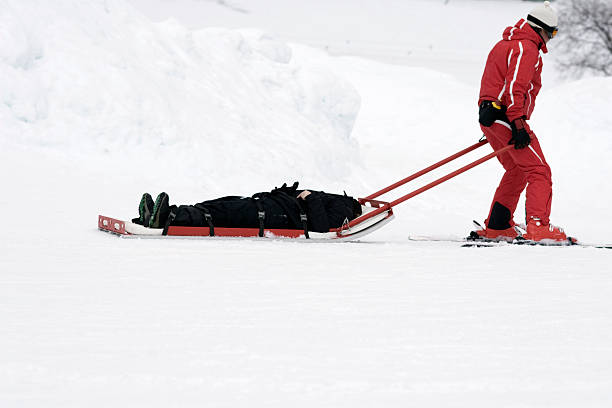How To Write A Canadian Resume And Cover Letter
The Canadian job market is competitive, and to stand out, you’ll need a well-crafted resume and cover letter tailored to Canadian hiring standards. While many countries share similar resume structures, Canadian employers have unique expectations for content, format, and tone. Understanding these standards is key to crafting documents that make a positive impression and improve your chances of landing interviews.
A Canadian-style resume typically emphasizes a clear, concise format, focusing on relevant skills and achievements rather than personal details. Cover letters are equally important, providing an opportunity to introduce yourself and explain why you’re a great fit for the role. This guide offers a step-by-step approach to creating both a Canadian resume and cover letter that showcase your qualifications effectively.
Basics of a Canadian Resume
A Canadian resume generally follows a reverse-chronological format, where your most recent job is listed first. The expected length is 1-2 pages, with a clear, professional layout that’s easy to read.
- Focus on Relevance: Canadian employers expect resumes to be tailored to the position, highlighting only the most relevant experience and skills.
- Avoid Personal Details: Unlike resumes in some other countries, Canadian resumes exclude personal information like age, marital status, nationality, or a photo.
- Use Action-Oriented Language: To demonstrate accomplishments, use active language and quantify achievements where possible.
What’s Expected in a Canadian Resume
1. Contact Information Section
At the top of your resume, include essential contact information:
- Full Name: Use your full name, omitting nicknames.
- Phone Number: List a Canadian phone number if possible, or ensure the format is accessible to international contacts.
- Email Address: Use a professional email, ideally based on your name.
- LinkedIn Profile: A LinkedIn profile is a valuable addition, especially if it aligns with your resume.
- Location: List only your city and province, such as “Toronto, ON.” Avoid including your full address.
Tip: Avoid including personal details like a photo, age, or marital status, which are not standard on Canadian resumes.
2. Crafting a Strong Summary or Objective Statement
The summary or objective is a brief section that showcases your skills, experience, and career goals. Use this section to make a positive first impression.
- For Experienced Professionals: Use a summary statement to highlight your expertise and career achievements in 2-3 sentences.
- For Entry-Level Candidates: Use an objective statement to describe your career goals and the value you can bring to the role.
Examples:
- Summary: “Experienced project manager with over 8 years of expertise in leading cross-functional teams, managing budgets, and delivering projects on time. Skilled in strategic planning and effective communication, seeking to bring value to a dynamic organization in Toronto.”
- Objective: “Recent marketing graduate with a passion for digital media and data analytics, seeking an entry-level role to apply skills in content creation and campaign management.”
3. Highlighting Your Professional Experience
In the experience section, list your work history in reverse-chronological order. Each entry should include the job title, company name, location, and dates of employment.
- Use Action Verbs: Start each bullet point with action verbs like “led,” “implemented,” or “managed.”
- Quantify Achievements: Whenever possible, include metrics to showcase impact, such as “Increased sales by 25%” or “Managed a team of 10.”
- Tailor to the Job: Focus on accomplishments and skills that align with the job description.
Example:
- Marketing Coordinator, ABC Corp, Vancouver, BC
Jan 2020 – Dec 2022- Developed social media campaigns that increased engagement by 40%
- Coordinated events and promotional materials for a brand launch that attracted over 5,000 attendees
4. Showcasing Your Education
For the education section, list your academic background, including degree(s), institution(s), and graduation date(s).
- Recent Graduates: Place this section above experience if education is more relevant.
- Include Honors: Mention any honors, scholarships, or relevant coursework if they strengthen your profile.
Example:
- Bachelor of Commerce, Major in Marketing
University of British Columbia, Vancouver, BC
Graduated: 2020
5. Emphasizing Skills Relevant to the Job
A dedicated skills section highlights your top competencies. Include both hard and soft skills relevant to the role.
- Hard Skills: Technical skills like “Data Analysis,” “Python,” or “Project Management.”
- Soft Skills: Interpersonal skills such as “Communication,” “Problem-Solving,” or “Team Leadership.”
- ATS Optimization: Use keywords from the job description to increase compatibility with Applicant Tracking Systems (ATS).
Example:
- Skills:
- Data Analysis | Communication | Project Management | Bilingual (English/French)
6. Including Optional Sections (Volunteer Work, Languages, Professional Memberships)
Additional sections add depth to your resume, especially if they showcase transferable skills.
- Volunteer Work: Valuable for recent graduates or newcomers to Canada, highlighting skills like teamwork and leadership.
- Languages: In Canada, bilingualism (English/French) is an asset.
- Professional Memberships: Industry memberships (e.g., CPA, PMP) demonstrate commitment to your field.
7. Formatting Tips for a Canadian Resume
Ensure your resume is well-formatted for readability and professionalism.
- Fonts: Use standard fonts like Arial, Calibri, or Times New Roman.
- Consistent Spacing: Maintain consistent spacing, alignment, and bullet points.
- Save as PDF: Save as a PDF to preserve formatting when applying online.
How to Write a Canadian Cover Letter
A cover letter complements your resume, providing a personalized introduction to your qualifications and interest in the role.
1. Structuring Your Cover Letter
Divide your cover letter into sections:
- Greeting: Address it to the hiring manager by name if possible.
- Introduction: Briefly introduce yourself, mentioning the job title you’re applying for.
- Body: Highlight your skills, achievements, and why you’re a strong fit.
- Closing: Reaffirm your interest and invite the employer to contact you.
2. Crafting an Engaging Introduction
Open with a compelling line that mentions the job and captures your enthusiasm.
Example: “I am excited to apply for the Marketing Specialist position at XYZ Corp, where my skills in digital marketing and content strategy align perfectly with your team’s needs.”
3. Highlighting Your Skills and Experience in the Body
Use the body to connect your qualifications to the job description, offering specific examples that demonstrate your abilities.
Example: “In my previous role as a Marketing Coordinator, I developed campaigns that increased brand engagement by 40%. I’m eager to bring this data-driven approach to XYZ Corp.”
4. Closing Your Cover Letter with a Call to Action
End with a closing that reinforces your interest in the role and invites further discussion.
Example: “Thank you for considering my application. I look forward to the opportunity to discuss how my background and skills can contribute to your team.”
5. Formatting Tips for a Canadian Cover Letter
- Length: Keep it to one page.
- Font and Style: Match the resume font and style.
- Proofreading: Carefully proofread for spelling and grammar errors.
Differences Between a Canadian Resume and a US Resume
A Canadian resume and a U.S. resume are quite similar in format and purpose, but there are subtle differences in content expectations and conventions.
-
- Length: U.S. resumes are typically one page for entry-level positions and two pages for more experienced roles, with a strong emphasis on brevity. Canadian employers are generally more flexible, allowing for one to two pages regardless of experience level, with room for more detail if relevant.
- Personal Information: In Canada, it’s common to list your name, contact information, and sometimes citizenship or work status if it’s relevant to the job. In the U.S., it’s generally unnecessary and discouraged to mention citizenship or visa status unless requested, as it can lead to potential discrimination issues.
- Spelling and Grammar: Canadian resumes use Canadian English, which favors British spellings (e.g., “labour” instead of “labor”). U.S. resumes should use American English conventions.
- Career Objective: Canadian employers are generally receptive to career objectives or professional summaries, particularly if they add value and clarify the applicant’s career goals. U.S. resumes, however, have mostly phased out career objectives in favor of concise summaries.
Overall, both Canadian and U.S. resumes focus on presenting qualifications effectively but are tailored slightly to meet different cultural and professional expectations.
Top of Form
Bottom of Form
Conclusion
Crafting a Canadian-style resume and cover letter involves tailoring your documents to align with Canadian hiring expectations. By focusing on relevant skills, avoiding personal details, and following a structured format, you increase your chances of making a positive impression. Remember to customize your resume and cover letter for each job application, highlighting your most relevant experience and skills.
Frequently Asked Questions
Q: How do I address employment gaps on a Canadian resume?
A: Briefly explain gaps if relevant, focusing on any transferable skills gained or personal development during that time.
Q: Can I include hobbies on a Canadian resume?
A: Only if they are relevant to the job or demonstrate skills valuable to the role, such as leadership or creativity.
Q: Should I follow up after sending a Canadian job application?
A: Yes, a polite follow-up email a week or two after applying shows interest and initiative.


